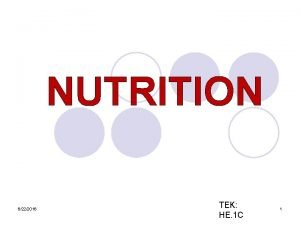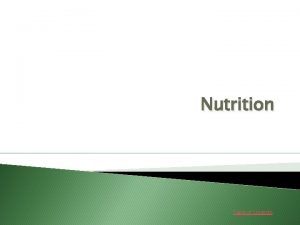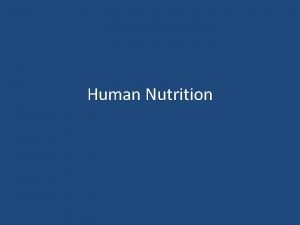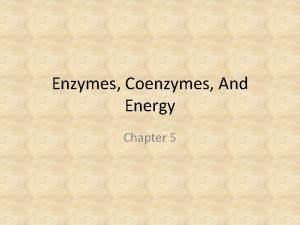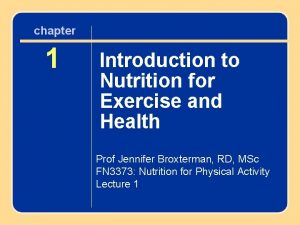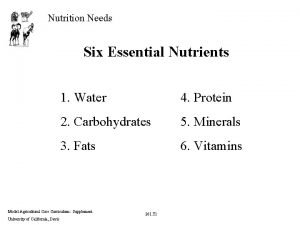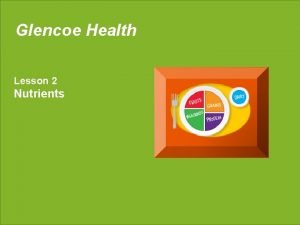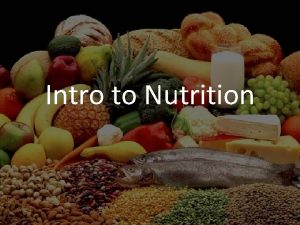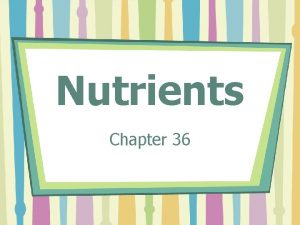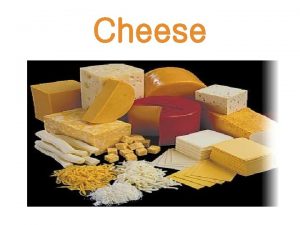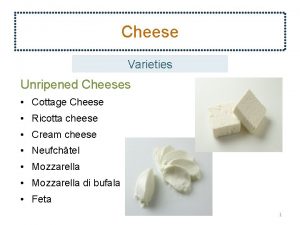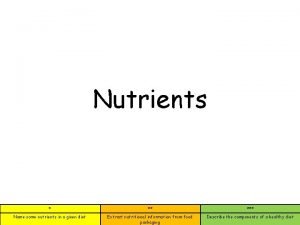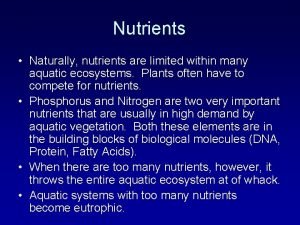Cheese Cheese Nutrients found in cheese Cheese is












- Slides: 12

Cheese

Cheese Nutrients found in cheese Cheese is particularly high in: • high biological protein • calcium • fat. It also provides: • vitamins A and D (depending on the season the milk is produced in) • some B group vitamins • phosphorous • zinc. 2

Cheese How is cheese made? 1. A starter culture is added to fresh, pasteurised homogenised milk. 2. Rennet is added. 3. Curds are formed and cut. 4. The whey is drained from the curd. 5. The curd is pressed to remove more whey. The more it is pressed the ‘harder’ the cheese becomes. 3

Cheese How is cheese stored after it is made? Cheese is wrapped and stored for up to 24 months allowing flavour to develop. 4

Cheese Different cheeses Cheeses are very different from one another depending on how much whey was removed, whether a flavouring or colourant was added and how long it has been stored for (this affects the age/maturity of the cheese). Generally, the harder the cheese the stronger the flavour. Cheeses that are used within a few weeks of production tend to have a mild flavour and a creamy texture. 5

Cheese How and why is cheese used in cooking? Cheese adds flavours from mild to very strong, from tangy to almost sweet. During cooking cheese becomes an appetising, rich golden colour. Heating cheese melts it and creates a soft, pliable, stringy texture. If overheated, the cheese proteins become burnt and will be bitter and hard. 6

Cheese Fresh cheeses and their uses Type of fresh cheese Uses Cottage cheese • Salads • Sandwiches • Jacket potatoes Fromage Frais • • Cream cheese Ricotta Mozzarella Dips Cheesecakes Soups Jacket potatoes Sandwiches Cheesecakes Filled ravioli • Pizzas • Salads 7

Cheese Soft and semi-hard cheeses and their uses Type of soft and semi-hard cheese Uses Brie • Cheeseboards • On crackers • Quiches Camembert • Cheeseboards • Deep fried Feta • Salads • Soups St Paulin, Edam, Port Salut • Cheeseboards What other soft cheeses are there? Research other dishes where soft cheeses can be used. 8

Cheese Hard cheeses Examples of hard cheeses include: • Cheddar • Parmesan • Red Leicester • Emmenthal • Jarlsberg • Manchego. Hard cheeses can be used in most dishes that are cooked (e. g. cottage pie, lasagne and quiche). They can be grated and sprinkled onto the surface of foods or eaten on their own with crackers or bread. 9

Cheese Blue cheeses Examples of blue cheeses include: • Stilton • Roquefort • Danish Blue • Gorgonzola. Blue cheeses have very tangy flavours. They can be used in cooked dishes, for example, Stilton and broccoli soup or Roquefort quiche. Explain how blue cheese is made. 10

Cheese Processed cheeses Examples of processed cheeses are: • Cheese Strings • spreadable cheese • cheese slices • cheese triangles. 11

Cheese How should cheese be stored? Cheese must always be stored completely wrapped or in a sealed container and away from strong smelling foods. It should be kept in a fridge at 0 to 4 °C. Soft cheese must have the ‘use by’ date showing. Uncooked cheese tastes better if it is taken out of the fridge 30– 60 minutes before it is to be eaten, but be careful to avoid food contamination! 12
 10 nutrients found in quick breads
10 nutrients found in quick breads The six nutrients
The six nutrients Vital agri
Vital agri How is waste and nutrients transported in a cnidarian
How is waste and nutrients transported in a cnidarian Nutrients and their functions table
Nutrients and their functions table Guard cells
Guard cells Table of contents food
Table of contents food Organic and inorganic nutrients
Organic and inorganic nutrients Chapter 5 nutrients at work
Chapter 5 nutrients at work Essential vs nonessential nutrients
Essential vs nonessential nutrients Six essential nutrients
Six essential nutrients What are nutrients
What are nutrients Glencoe health chapter 10
Glencoe health chapter 10

